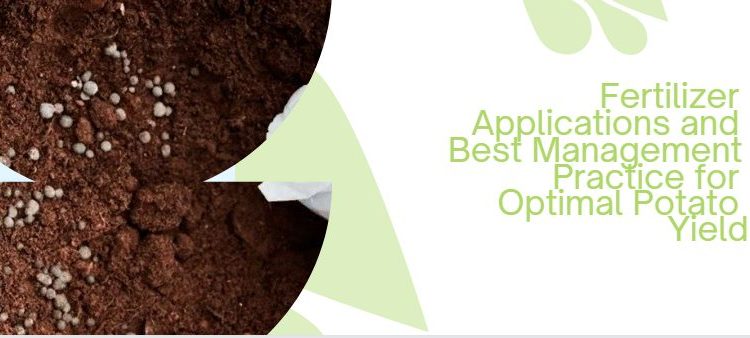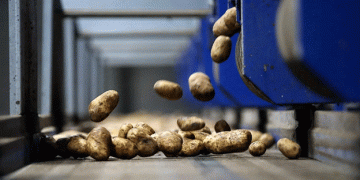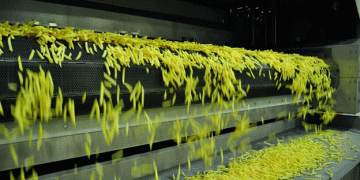#PotatoCultivation #FertilizerManagement #NutrientOptimization #CropYield #AgricultureBestPractices #SustainableFarming
Fertilizer Best Management Practice (BMP) is essential for achieving optimum potato crop productivity, profitability, and sustainability while minimizing negative offsite impacts. The right source of nutrients, applied at the right rate, at the right time, and in the right place can significantly influence potato yield. This article delves into the importance of nutrient management for potato cultivation, focusing on nitrogen (N), phosphorus (P), and potassium (K) – the major nutrients required for potato growth.
The Significance of Proper Nutrient Management
Potatoes have a unique root system that primarily grows within the hill, limiting their ability to scavenge nutrients deep in the soil profile. Moreover, after 60 days of planting, root system development starts to decline, coinciding with the peak nutrient demand for tuber bulking. Hence, precise fertilization practices become crucial to meet the high crop demand and attain optimum yield.
Nitrogen, Phosphorus, and Potassium
Nitrogen (N): N plays a critical role in the development of high-yielding, quality tubers. However, both excessive and inadequate N supply can harm crop vigor and tuber yields. Fluctuations in N levels can lead to misshapen tubers, brown centers, and hollow hearts. Excessive N delays tuberization, slows skin and tuber maturation, increases bruising, and promotes a densely vegetated, disease-prone canopy. Engaging in proper N management is key to avoiding these issues.
Phosphorus (P): Adequate P supply is vital for early root development, flowering, and tuber set. Insufficient P can hinder crop growth and tuber formation, resulting in reduced yields. Proper BMP ensures an optimal P supply throughout the crop’s growth stages.
Potassium (K): K is essential for tuber development, water regulation, and disease resistance. Adequate K supply promotes healthier and more robust potato plants, leading to improved yields and quality.
Fertilizer BMP for Nitrogen
Sources: Nitrogen is sourced from fertilizers, compost, manure, and soil mineralization. Common fertilizers include Urea, MAP, DAP, Ammonium sulfate, Calcium nitrate, Potassium nitrate, and Magnesium nitrate. Composted recycled organics, both animal and plant-derived, can also be utilized, but their N concentration varies, necessitating regular analysis for precise application rates.
Rate: N application rates depend on soil N carryover, mineralized soil N during the growing season, cultivar, end-use, and yield potential. Local agronomists or consultants can offer tailored advice based on your specific environment and production system.
Timing and Placement: N is most crucial during growth stages 1, 3, and 4, with peak demand in Stage 4. Since more than half of the crop’s N requirement is needed after plant establishment, multiple in-crop N applications may be necessary. Proper placement, whether at planting or in-crop, is essential to avoid wastage and leaching beyond the rootzone.
Efficient nutrient management, especially for nitrogen, phosphorus, and potassium, is crucial for achieving optimal potato yields and quality. By following best management practices, farmers can improve crop productivity, profitability, and environmental sustainability. Regular soil and tissue analysis, along with expert advice, contribute to better understanding crop requirements and achieving successful potato cultivation.
Source: Australian Potato Growers






